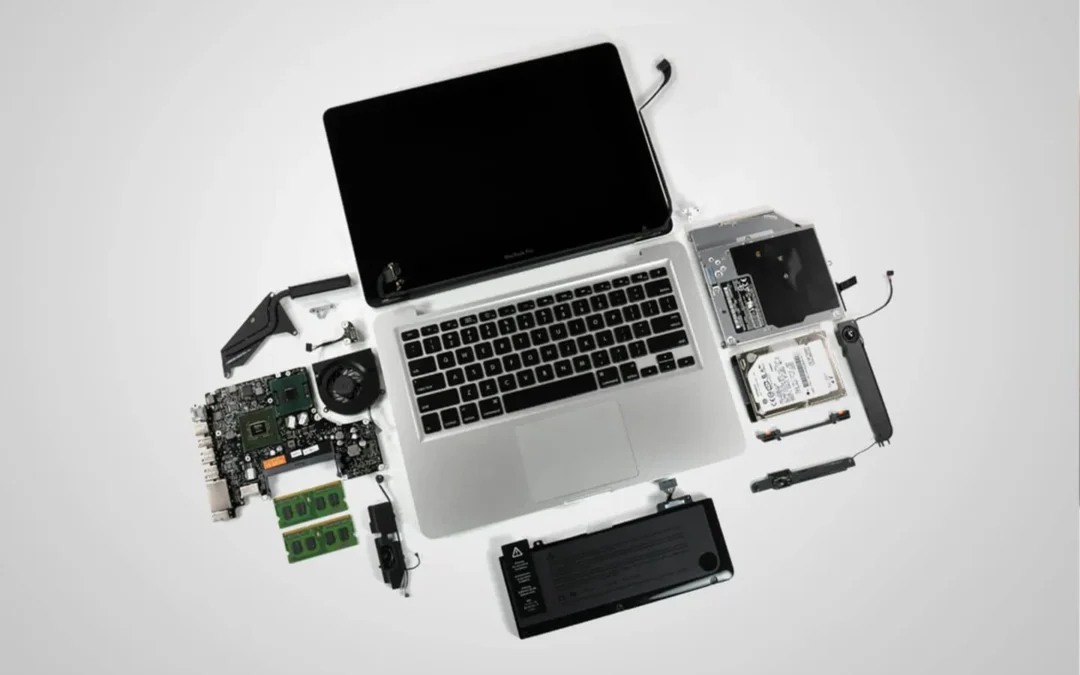Introduction
MacBooks are known for their speed, efficiency, and long-lasting performance. Whether you use one for work, study, or creative projects, it’s frustrating when your once-speedy laptop begins to crawl. Applications take forever to open, web pages lag, and simple tasks feel like a challenge.
This slowdown doesn’t mean your MacBook is beyond saving. In most cases, professional diagnostics and targeted repairs can restore performance. Many people search for “fix Mac” or “MacBook Pro repair” only after they reach the point of frustration, but acting earlier can save both time and money.
In this article, we’ll explain the most common causes of slowdowns, how technicians diagnose the issues, upgrade options to speed up your system, and why a certified Apple MacBook screen repair service centre is your best choice for long-term performance and security.
Why Do MacBooks Slow Down Over Time?
Even the fastest MacBooks are not immune to performance decline. Several factors contribute to a slow Mac, and understanding these causes can help you make the right repair choices.
1. Outdated Hardware
Older models may struggle to keep up with modern apps and macOS updates. An SSD upgrade or RAM expansion performed during iMac repair or MacBook servicing can make a noticeable difference.
2. Too Many Background Processes
Over time, users accumulate unnecessary apps, login items, and background processes that drain resources.
3. Storage Issues
A nearly full SSD slows performance dramatically. Even 10–15% of free space is critical for system operations.
4. Overheating and Dust Buildup
Fans clogged with dust or dried thermal paste cause overheating, throttling performance to protect the CPU.
5. Software Problems
Corrupted files, outdated macOS, or even malware (though rare) can make your MacBook sluggish.
6. MacBook Pro Water Damage
Liquid damage is a silent performance killer. A spill may not break your MacBook immediately but can slowly corrode components, causing lag, freezes, and eventual failure.
Immediate Steps to Try at Home
Before rushing to a repair centre, you can try a few safe actions:
- Restart your MacBook to clear memory.
- Remove unnecessary startup items in System Preferences.
- Free up disk space by deleting old files or moving them to iCloud.
- Check Activity Monitor to identify resource-heavy apps.
If these steps don’t solve the issue, it’s time to consult experts for MacBook Pro repair or iMac repair.
How Professionals Diagnose a Slow MacBook
Certified technicians perform detailed assessments that go far beyond basic troubleshooting.
Hardware Diagnostics
- SSD health checks determine if storage is failing.
- RAM tests reveal memory issues.
- Logic board inspections catch corrosion or power delivery faults from MacBook Pro water damage.
Software Analysis
- Malware scans identify infections.
- Logs are reviewed for crashes or kernel panics.
- Benchmark tools are used to measure system performance against factory standards.
This professional process is far more accurate than guessing at home or installing unreliable “Mac cleaning” apps.
Overheating, Freezing, and Performance Drops
One of the most common complaints we hear at our Apple MacBook screen repair service centre is that the device overheats or freezes during use.
- Overheating: Dust and blocked fans cause poor airflow. Professionals clean the cooling system, reapply thermal paste, and test fan operation.
- Freezing: Random freezes may point to failing RAM, logic board damage, or MacBook Pro water damage.
- Performance Throttling: The CPU automatically slows down to prevent heat damage. Professional cleaning and cooling system repairs fix this.
Upgrade Options to Boost MacBook Speed
Sometimes repairs aren’t enough—your MacBook may simply need an upgrade.
SSD Upgrades
If your MacBook still uses a HDD or smaller capacity SSD, replacing it with a larger, faster one dramatically improves speed.
RAM Expansion
Certain MacBooks allow RAM upgrades. More memory enables smoother multitasking and faster app switching.
Battery Replacement
A failing battery can limit performance. During MacBook Pro repair, technicians often test and replace batteries to restore full function.
Keyboard and Screen Repairs
Although not directly related to speed, a faulty keyboard or screen can slow productivity. Many customers combine MacBook Pro keyboard replacement or screen repairs with internal upgrades for a complete refresh.
Software Optimisation by Professionals
Hardware isn’t the only factor. Technicians also fine-tune macOS for optimal performance.
- Fresh OS installation removes years of clutter.
- Malware removal eliminates hidden processes.
- Firmware and driver updates improve stability.
- Custom configurations ensure your MacBook runs as efficiently as possible.
Preventing Future Slowdowns
Keeping your MacBook fast requires consistent care.
- Regular Backups: Use Time Machine or iCloud to protect files.
- Routine Maintenance: Schedule professional servicing once a year.
- Avoid Water Risks: Keep liquids away—spills cause MacBook Pro water damage that impacts performance.
- Free Storage Space: Maintain at least 15% free SSD space.
- Safe Upgrades: Always use professional services for SSD or RAM installations rather than DIY.
Why Choose a Certified Apple Repair Service
Not all repair centres are equal. Choosing a certified Apple MacBook screen repair service centre ensures:
- Expertise: Trained technicians with years of MacBook repair experience.
- Professional Tools: Equipment designed for delicate MacBook repairs.
- Comprehensive Services: From iMac repair to MacBook Pro keyboard replacement, everything is handled under one roof.
- Data Security: Your files are treated with confidentiality.
Conclusion
A slow MacBook doesn’t mean you need to buy a new one. Often, the issue can be resolved with professional diagnostics, repairs, and upgrades. Whether it’s MacBook Pro water damage, a failing SSD, or a clogged cooling system, certified experts can restore performance and extend the life of your device.
Call to Action:
If your MacBook is running slow, don’t wait until it fails completely. Contact AppleMacBookRepair.co.uk today for trusted MacBook Pro repair, iMac repair, and performance upgrades at our certified Apple MacBook screen repair service centre.
FAQs
Q1: Why is my MacBook running slow all of a sudden?
Sudden slowdowns may result from background apps, overheating, or failing hardware. A full diagnostic from a professional repair centre identifies the root cause.
Q2: Can water damage make my MacBook slow instead of killing it?
Yes. MacBook Pro water damage can corrode components gradually, leading to lag and performance issues before total failure.
Q3: Should I try to upgrade RAM or SSD myself?
DIY upgrades are risky. Without the right tools, you may damage the logic board or connectors. Professional services are safer.
Q4: How often should I service my MacBook?
A yearly checkup is recommended. Regular servicing prevents dust buildup, detects failing parts, and keeps performance high.
Q5: Do Apple Stores fix performance issues?
Apple Stores often suggest part replacements or upgrades. For detailed diagnostics, MacBook Pro repair, or combined fixes like MacBook Pro keyboard replacement, an independent certified repair centre is often more flexible.


Recent Comments